When was the last time you performed a full bodyweight workout? Chances are, not recently. We don’t blame you; after all it is not commercially “sexy”.
Yes, even though bodyweight workouts remain an effective way to jack testosterone and growth hormone levels through the roof, they are undeservedly frowned upon because there is nothing to sell.
But we know better, as bodyweight exercises can help take your physique to the next level, all without equipment.
The Secret Of Bodyweight Training – Isometric Contractions
Have you ever wondered why ballet dancers have highly developed calf muscles, regardless of age and gender? Yes, these are athletes that rely on mainly water and not much else, in a discipline where gaining weight is not a favorable trait. And yet their level of calf development is significantly greater than the average population, and many bodybuilders for that matter.
The reason? Isometric contractions.
A normal repetition of an exercise usually has two phases, the concentric (or working phase), when the muscle is shortening, and the eccentric, when the muscle is lengthening or going to the negative position. Isometric contractions, on the other hand, involve holding a static position for several seconds, normally around 10.
But it’s not as simple as just holding a position, because a lot is actually going on under the surface. Typically, that static hold should recruit a large number of motor neurons in muscles throughout the body, and not only the body part you think it should focus on.
Take for example the push up, and excellent isometric bodyweight exercise. Though you may think you just need to hold the peak position and do nothing, the ideal way to do it would be to hold in a position just before full lockout, all the while contracting the muscles of the glutes, calves, chest and back.
Thus, even though it may look casual on the surface, a lot is happening below the surface. Ballet dancers spend a large portion of their training time in a tip-toed position, forcing maximum calf contractions for an extended period of time. This is ideal for growth of stubborn muscle groups, especially the calves and biceps.
Choosing The Best Bodyweight Exercises For Eliciting Maximum Testosterone and Growth Hormone Response
In general, exercises that provoke the greatest extent of testosterone and growth hormone release are short and intense, something that isometric training has covered. Try the following exercises and see strength and size transform faster than you’ve ever seen before using only bodyweight:
The Push Up
The push up is a staple of bodyweight workouts, but an isometric push up is performed quite differently. As briefly mentioned above, it recruits a lot more muscle groups that the pectoralis only. For best results, perform the exercise like this:

- Start by assuming a normal push up position, arms slightly wider than shoulder width.
- Press up from the ground and hold at a position just short of locking out the elbows. This is your “working position”.
- Squeeze muscles of the glutes, back, calves and the pectorals by simulating the action of moving your elbows inward toward your midline. This recruits the chest muscles sharply.
- Hold this position for just 6-10 seconds. This is considered a rep.
- Pro Tip: you can also perform a variation of this position by keeping the elbows tucked closer to the sides, and almost fully bent. Your body ends up almost perpendicular to the floor in this position.
Biceps One Arm Isometric Hold Curl
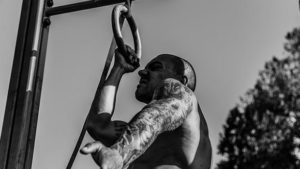
This exercise is intense even though the duration per rep is still 10 seconds. To perform:
- Hang from a pullup bar with both hands.
- Raise yourself to a complete pullup, using an underhand grip with both arms.
- At the top position, lower yourself slightly, so that your elbows mimic the position of a lifted barbell at the middle position (app
- Loose of one arm, and grasp the forearm of the hanging arm. Hold this contracted position for 10 seconds.
- Be sure to contract with peak force as many muscle groups as you can, without sacrificing loss in tension of any one muscle group.
Single Leg Standing Calf Contraction
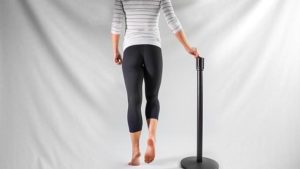
As the name implies, this exercise induces massive increases of calf development. To perform:
- Stand on one leg, spreading toes as far as comfortably possible.
- Press up as far as possible to achieve a peak contraction.
- Hold for 10 seconds
- Try to not lose contraction for the sake of balance. Repeat with other leg
Isometric Lateral Hold
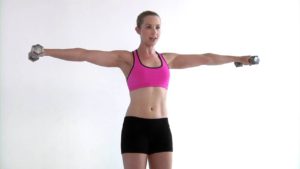
If you’ve performed dumbbell side lateral raises before, this movement is very similar. To perform:
- Place hands at sides, in a palms down position.
- Raise up to the sides, laterally at a position in line with the shoulders. This can be done while holding a light weight or without any additional weight.
- Try to squeeze the muscle groups in the shoulder along with other muscle groups.
- Hold for 10 seconds then relax.
Dip Bar Hold
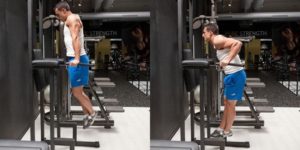
As the name implies, this exercise involves using a triceps dip bar to perform isometric contractions. To perform:
- Get in fully extended triceps position on a dip bar.
- Fully extend your elbows as far as it comfortably goes.
- Forcibly squeeze the triceps to get in a strong contraction.
- Hold this contraction for up to 10 seconds.
Wall Sit
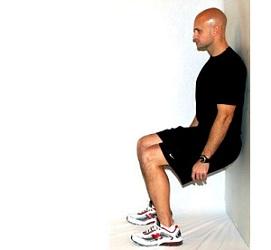
The wall sit is an isometric exercise that primarily emphasizes the quadriceps muscle group, although theoretically it will take a lot more to elicit major hypertrophy in this muscle group. To perform the wall sit:
- With legs shoulder width apart, position yourself bracing a wall
- Slowly lower yourself until you are in a position resembling being seated.
- Hold that position for up to 10 seconds.
Wrapping Up
Isometric bodyweight exercises are an excellent way to add muscle and promote hypertrophy. While the technique can be used alone, it can also be effectively combined with weight bearing exercises to foster an even greater physique. Isometric exercise also shows great promise in rehab, being able to strengthen muscles without load bearing, as was recorded in a study.
At the end of the day, you need to train smarter, taking advantage of your hormonal strengths and following a sound diet plan to see results!
Alex Eriksson is the founder of Anabolic Health, a men’s health blog dedicated to providing honest and research backed advice for optimal male hormonal health. Anabolic Health aspires to become a trusted resource where men can come and learn how to fix their hormonal problems naturally, without pharmaceuticals. Check out his guide on The Ultimate Guide to Manly Cooking or follow him on Twitter or Facebook.

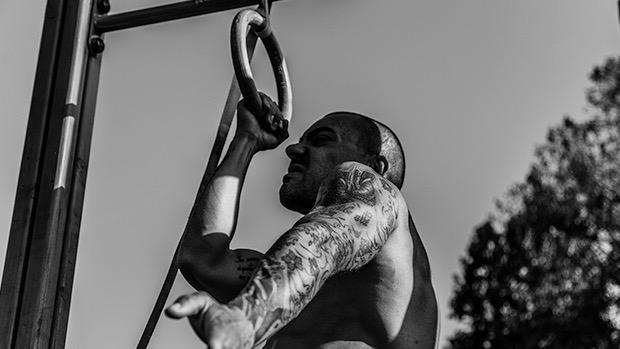
Comments
Great info. Are these intended to be single-rep exercises, or multiple reps/sets of ~10 sec holds? That is, are multiple reps needed for more GH and T, or will a single rep do it?
Hey David,
Thanks for the feedback! Sorry for missing to include that information, pretty important!
So when it comes to eliciting a hormonal response, short bursts of intense training is what you want.
In other words, the reps should be as heavy as possible so you can only do very few of them. Similar to some of the classic 5×5 strength routines (which build strength primary by hormonal response and not by muscle firsthand, DHT is a player here. Powerlifters are a good example also).
For example the push up would be as sloooow as possible, or you could stay in the middle of a push up movement for as long as you have strength, ala isometrics.
https://www.ncbi.nlm.nih.gov/pubmed/12797841
But don’t let it turn into an endurance type thing, that is when it is better to switch to a position that puts more pressure on you, such as one arm push up if you find yourself being able to do regular push up isometrics for long periods without tiring.
Endurance type training is crap for hormones: https://main.poliquingroup.com/ArticlesMultimedia/Articles/Article/1340/How_Endurance_Exercise_Lowers_Testosterone_What_To.aspx
Thanks!
Alex
Why not create a book with this type of a training program. I would surely buy it!
Hey Charles,
Thanks for the feedback!
It is actually in the works. We are looking at creating a simple program for increasing testosterone without any fancy supplements or stuff, only training and diet. No gym needed.
However, currently we have to build up our article base at Anabolic Health more and make sure we cover every area before venturing into creating more specific guides.
Stay tuned!
Great infor, Alex. I love bodyweight. Some other workouts also help (deadlift, tabata) according to BodyBuilding
I am confused on the description and picture for the Dip Bar Hold. I understand it to be that I extend my arms (Fig.1) and lock them out as I push and hold myself up for 10 seconds. And then (after 10 sec.) I lower myself (bending arm to 90 degrees) and then –
Is it hold for 10 more seconds (bottom of dip @ Fig. 2) OR
Do I go back up to a lock-out press?
Hi Alex.
Great info. You could really capitalize right now, while the world is in lock down mode due to carona virus. Have you released any home workouts that we can do while in quarantine? Taking into consideration different levels of ability and strength?
All the best to ya
Chris